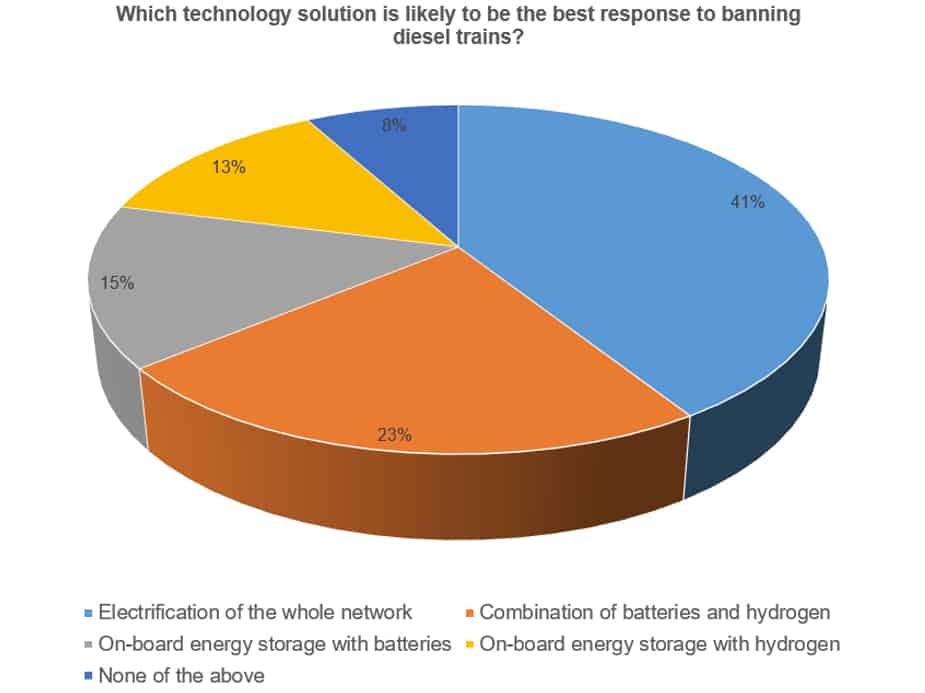Last week’s poll: replacing the UK’s diesel train fleet
With the war on diesel moving onto the railway tracks, we asked Engineer readers for their thoughts on the best options to replace Britain’s diesel train fleet.

The poll came about following a speech by transport minister Jo Johnson, who stated that the government wants to phase out diesel trains on the UK rail network by 2040.
He said that ending reliance on fossil fuels is a priority for the government, both to curb carbon emissions and to improve air quality.
But how should this be taken forward: by electrifying the entire rail network, or introducing onboard energy storage with batteries or hydrogen? Would a combined battery/hydrogen solution work best?

The poll received 701 votes, with 41 per cent of respondents opting for electrification of the whole rail network, and just under a quarter (23 per cent) choosing a combination of batteries and hydrogen. Of those opting for a single energy source, 15 per cent went for onboard storage with batteries, and 13 per cent elected for onboard energy storage with hydrogen. The remaining eight per cent went for none of the above.
Register now to continue reading
Thanks for visiting The Engineer. You’ve now reached your monthly limit of news stories. Register for free to unlock unlimited access to all of our news coverage, as well as premium content including opinion, in-depth features and special reports.
Benefits of registering
-
In-depth insights and coverage of key emerging trends
-
Unrestricted access to special reports throughout the year
-
Daily technology news delivered straight to your inbox










Water Sector Talent Exodus Could Cripple The Sector
Maybe if things are essential for the running of a country and we want to pay a fair price we should be running these utilities on a not for profit...